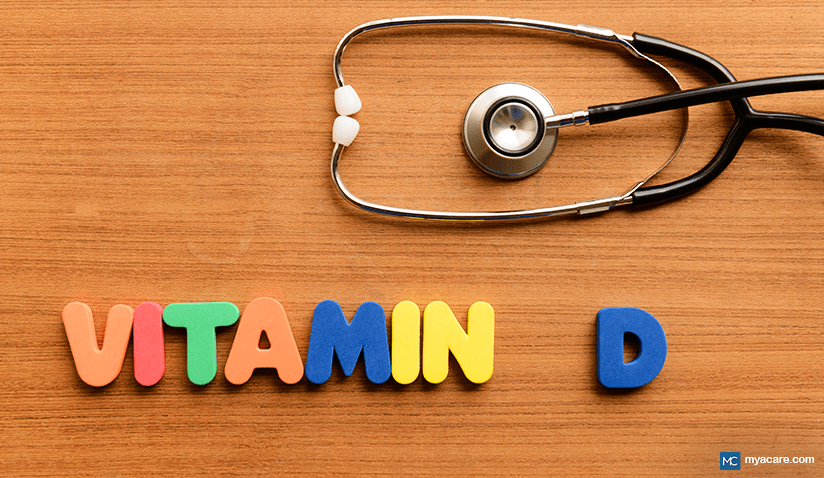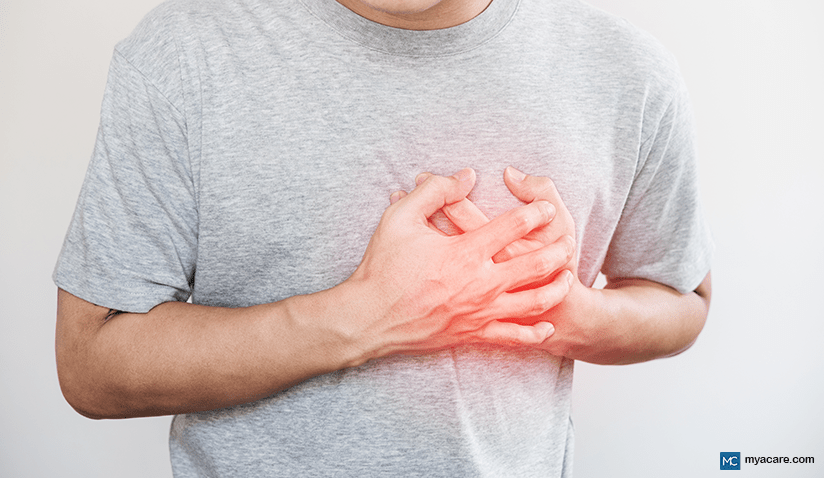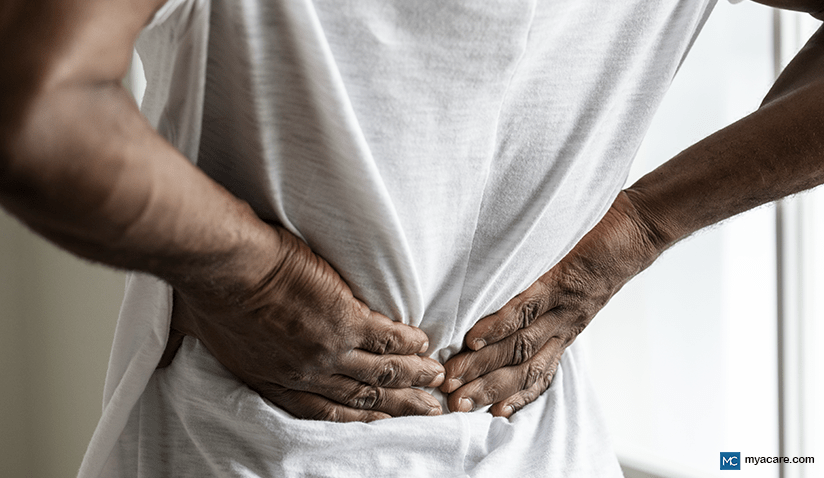VITAMIN D DEFICIENCY

Vitamin D is an essential nutrient required by our bodies to stay healthy and function well. Lack or deficiency of Vitamin D can lead to several diseases associated with bone deformities and neurological disorders.
Vitamin D was discovered much after its deficiency. Since the mid 1600`s, scientists noticed some children suffered from a condition that later would be known as rickets, which was characterized by soft and deformed bones. Over the years (1900`s) it became evident most children in europe suffered from rickets (90%), because of this, finding the cause/cure became a priority. In the 1920`s the scientific community finally accepted the lack of sunlight and certain foods (rich in vitamin D) as the cause for most cases of rickets. Since then, standard protocols were created to enrich foods with this vitamin as a large-scale treatment/prevention method for vulnerable populations.
Nearly 70% of our vitamin D is produced as an inactive hormone in our skin by its exposure to sunlight and then processed/activated in our kidneys. Its main functions are calcium and phosphate regulation. This role is important because it keeps our bones, teeth and muscles healthy. Also, is indirectly associated with a very large number of processes which are needed for the normal behavior of our bodies. Exposure to sunlight and vitamin D-rich diets promote healthy blood levels, consequently, people from sunless countries and with vitamin D-poor diets are more vulnerable. Normally, infants and people with dark skin are also considered as high-risk groups.
In the United States large studies revealed that up to 37% of all adults, 10% of white infants and 46% of black infants had dangerously low blood levels of vitamin D. India, Mexico, and Turkey show even higher numbers. Many experts report a pandemic of vitamin D deficiency. This condition manifests differently in children/infants and adults. In children, the most well-known form of vitamin D deficiency is called “rickets”. In adults, the correct term is osteomalacia.
Rickets
This disease is caused by very low levels of vitamin D and affects mostly growing bones, which means that is primarily observed in infants (0 to 1 years old); however, young children and even teenagers can be at risk.
Younger infants (3 months old) will mostly not display any signs of this disease. During this period of their lives, they are protected by the vitamin D from their mother’s milk but after 6 months early signs will start appearing.
Symptoms
- The first signs include convulsions, twitching and sporadic apnea
- Early stages don't include bone deformities
- Bone pain
- Deformed skeleton/ weak or soft bones (starting at 6 months)
- Swelling at the wrists, knees and ankles (mainly at the bone´s terminals)
- Late closure of the soft part on top of a baby's head
- Dental problems
- Poor growth/height
Treatment
Please consider that some genetic conditions can lead to severe vitamin D deficiency and such cases are treated differently. In usual cases, rickets in children can be treated/prevented by:
- Eating more food rich in calcium and vitamin D
- Taking vitamin D and calcium supplements, 400 IU/day (very important in cases of genetic rickets)
- Annual vitamin D injections in case oral administration is not practical
- Spending more time under the sun
- Keeping healthy vitamin D levels during pregnancy
- Introducing solid foods between 4 to 6 months after birth
- Increasing the amount of dairy in their diets
Osteomalacia
This condition is in essence very similar to rickets; however, this term is used for adult individuals and is studied form a different perspective than vitamin D deficiency in children. Naturally, vitamin deficiency is the primary cause for osteomalacia in adults but age (>65 years old), diet, certain surgeries (partial or total excision of the stomach) and some medications (like phenytoin) can also contribute to poor intake or absorption of vitamin D and calcium, leading to weak and soft bones.
Osteomalacia is also associated to hyperthyroidism and hypocalcemia, which means that an excess or hormones is altering the normal equilibrium of calcium, leading to thinner and weaker bones.This condition is very similar to osteoporosis, but in osteomalacia the bones don't become more porous, just softer.
Symptoms
- Early stages are usually asymptomatic
- Bone pain
- Muscular weakness
- Difficulty to walk or stand
- Convulsions
- Frequent fractures
Treatment
Treatment if fairly simple in cases where vitamin D and calcium deficiency are mainly caused by poor diets and/or insufficient sunlight. Most doctors recommend at least 1000 mg of calcium/day and 800-1200 IU of vitamin D/day, also many physicians prescribe to increase the patient's exposure to sunlight . More serious cases are treated with greater amounts of vitamin D and calcium. Severe cases may require up to 4000 mg of calcium/day.
Vitamin D deficiency is generally not a difficult condition to treat but is becoming more common worldwide. In order to help people at risk, we present a short list of common food items rich in vitamin D and calcium:
- Salmón
- Spinach
- soybeans
- Kale
- Sardines
- Cod liver oil
- Tuna
- Oysters
- Shrimp
- Egg yolks
- Common cow's milk, orange juice, oatmeal and soy milk (these are usually fortified with vitamin D and/or calcium)
To search for the best healthcare providers worldwide, please use the Mya Care search engine.
References
- The history of vitamin D. (n.d.). Retrieved from http://blog.vitaminddrops.com/the-history-of-vitamin-d/#_ftn1
- Vitamin D. (2017, October 23). Retrieved from https://www.nhs.uk/conditions/vitamins-and-minerals/vitamin-d/
- Vitamin D: The Kidney Vitamin? (2017, March 3). Retrieved from https://www.kidney.org/news/kidneyCare/spring10/VitaminD
- Roth, D., Abrams, S., Aloia, J., Bergeron, G., Bourassa, M., & Brown, K. et al. (2018). Global prevalence and disease burden of vitamin D deficiency: a roadmap for action in low‐ and middle‐income countries. Annals Of The New York Academy Of Sciences, 1430(1), 44-79. doi: 10.1111/nyas.13968
- Kennel, K. A., Drake, M. T., & Hurley, D. L. (2010). Vitamin D Deficiency in Adults: When to Test and How to Treat. Mayo Clinic Proceedings, 85(8), 752-758. doi:10.4065/mcp.2010.0138
- Kids Health Info : Rickets. (n.d.). Retrieved from https://www.rch.org.au/kidsinfo/fact_sheets/rickets/
- Laurent, M., Bravenboer, N., Schoor, N., Bouillon, R., Pettifor, J., & Lips, P. (2018). Rickets and Osteomalacia. Primer On The Metabolic Bone Diseases And Disorders Of Mineral Metabolism, 684-694. doi: 10.1002/9781119266594.ch89
- Symptoms. (2017, October 23). Retrieved from https://www.nhs.uk/conditions/rickets-and-osteomalacia/symptoms/
- Hiperparatiroidismo - Síntomas y causas. (2019, March 13). Retrieved from https://www.mayoclinic.org/es-es/diseases-conditions/hyperparathyroidism/symptoms-causes/syc-20356194
- Osteoporosis vs. Osteomalacia. (n.d.). Retrieved from https://study.com/academy/lesson/osteoporosis-vs-osteomalacia.html
- Calcium and Vitamin D: Top Food Sources. (2010, November 17). Retrieved from https://www.webmd.com/food-recipes/guide/calcium-vitamin-d-foods
Disclaimer: Please note that Mya Care does not provide medical advice, diagnosis, or treatment. The information provided is not intended to replace the care or advice of a qualified health care professional. The views expressed are personal views of the author and do not necessarily reflect the opinion of Mya Care. Always consult your doctor for all diagnoses, treatments, and cures for any diseases or conditions, as well as before changing your health care regimen. Do not reproduce, copy, reformat, publish, distribute, upload, post, transmit, transfer in any manner or sell any of the materials in this blog without prior written permission from myacare.com.



